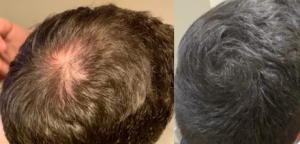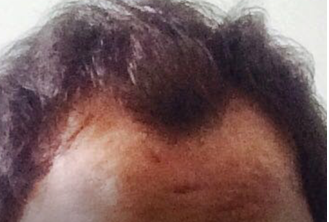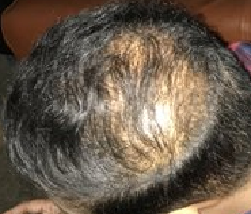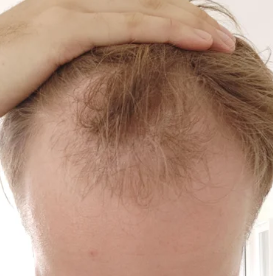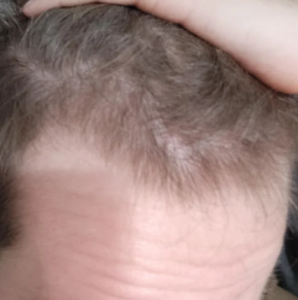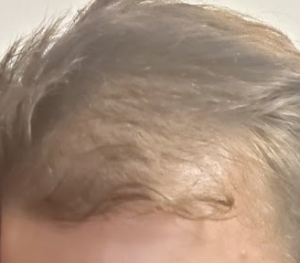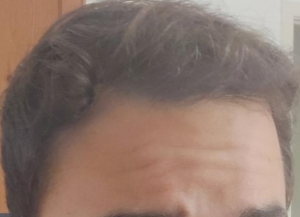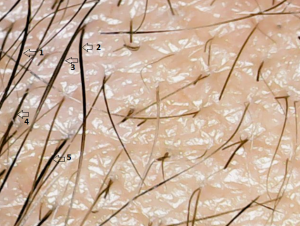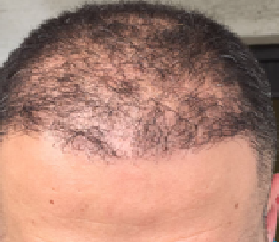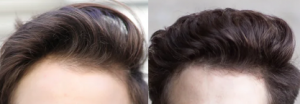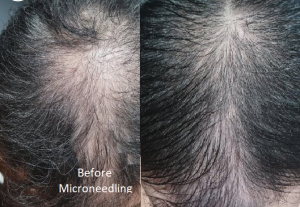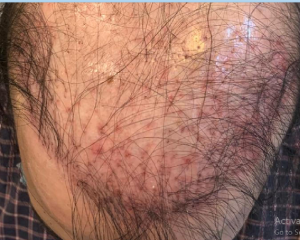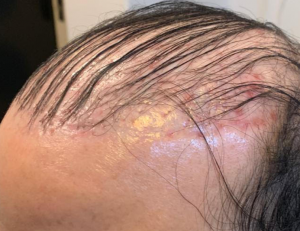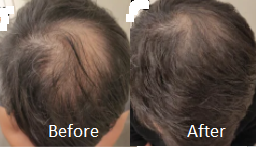From the picture, you have a Class 3 pattern of balding. Of course, I would want to examine you to see if there is balding behind the forelock you are showing, but assuming what I am seeing is all the balding you have, I would estimate something between 1500-2000 grafts depending upon your hair thickness (fine, medium or coarse) with finer hair requiring more grafts.
Although the front looks good, the back does not look as good as I expected. What do you recommend?
What you got now is about what you will get and no more. Usually all of the grafts have grown out in a year? If you want more density, you will probably have to meet with your surgeon again and ask for a second surgery for the crown or consider Scalp Micropigmentation (https://scalpmicropigmentation.com/gallery/thinning-hair/#!https://scalpmicropigmentation.com/wp-content/uploads/2016/04/scalp_micropigmentation-new_hair_institute-042-thinning_hair.jpg).
Here is the article, you judge for yourself. These units are expensive and from what I hear, the benefits are marginal. One of the problems with LLLT is the distance from the scalp and the amount of hair between the LLLT and the scalp. The longer the distance and the more hair, the less effective it will be. I would conclude that a shaved head would give the best response and should be tested: https://journals.lww.com/md-journal/FullText/2020/07170/Low_level_light_therapy_using_a_helmet_type_device.73.aspx
I am starting to worry about doing damage by picking off my scabs. Is it OK to do that?
Absolutely, do not pick off the crusts from the recipient area as the grafts are attached to these crusts and when you pick or pull on them, the graft will come out especially in the first 2 weeks. An FUE is treated just like a regular hair transplant with regard to the recipient area, but the donor area has open wounds which require daily washing with soap and water. Within 3 days of surgery, you can resume full activities, heavy exercises if you wish. The recipient area requires daily washes as well to keep the recipient area free of crusts. I generally recommend and if you washed it properly, there will be no crusts on it, even the very next day. Use of a sponge which we supply our patients, a surgical sponge to fill with soapy water and press on the recipient area daily. By repeating this daily, all crusts can be washed off without any fear of losing grafts. IF any crusts are present, use a Q tip and dip it into soapy water, and roll it on the crusts and that will lift them off without dislodging them, but never rub them, just roll the Q tip on the recipient crust. I like to see no evidence of any crusting in the recipient area and the crusts from the donor area gone in 7-10 days with daily washing.
Dr. Thomas Dawson wrote a good description of Dandruff in the Hair Transplant Forum May/June 2017 issue as follows:
WHAT IS DANDRUFF?
Normal scalp has few flakes and healthy appearing, smooth skin. Dandruff is characterized by loosely adherent flakes and itching. Specifically, dandruff has no inflammation and is confined to the scalp, while seborrheic dermatitis has yellowish, piled adherent flakes that can extend beyond the scalp to beard, moustache, and eyebrows accompanied by visible inflammation.1 Seborrheic dermatitis is more than superficial flaking, including hyperproliferation, excess lipids, and poorly differentiated corneocytes across the scalp.4 Dandruff requires three factors: fungi (Malassezia), sebum, and individual susceptibility. While there remains much debate in the current medical literature, upon review, the vast majority of evidence points at the very least to a fungal “initiator,” most likely Malassezia fungi.
This is Diffuse Unpatterned alopecia (DUPA) which shows only 5 normal thickness hairs which are labeled in the photo (1-5) and the rest are miniaturized. This comes from the donor area which almost certainly is see-through. Note that this is best seen when the hairs are cut short because they can be easily counted as you can see on the long hairs on the left of the photo. Anything over 20% miniaturization is DUPA if it is the donor area.
I had a hair transplant 8 months ago and I am bothered by bumps which are on the skin everywhere there is a graft. What can this be and will it go away?
Bumpy skin in the recipient area (called cobble stoning) reflects the types of recipient sites and the way the grafts were placed at the time of your original surgery. If the grafts were small, the wounds were very small and the grafts were left flat to the surrounding skin, then there should be no bumps present. See your surgeon and ask your surgeon about the problem that is clearly bothering you.
I had 4500 grafts in Turkey almost one year ago, I see holes in my transplant pattern.
Yes, I see what you are talking about. A session of 4,500 grafts requires a great deal of skill in handling the grafts. Grafts that are out of the body exposed to air for 10 seconds will die before they are put into the recipient area. Quality control therefore is very important. I suspect that the quality control may not be tight. I too would have expected to see much more density present. What is unfortunate, is that your donor area has been depleted by over half and another FUE in the donor area could cause you donor site depletion and a see-through donor area that looks like it is balding. My recommendation is to see a doctor with years of experience who knows how to manage your problem and won’t make you look worse in the donor area.
Page 202 of 641

